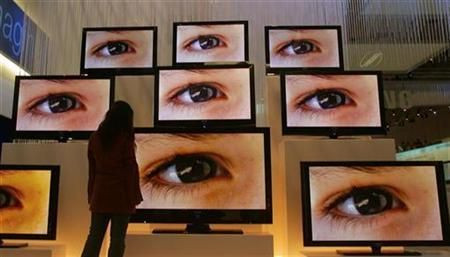Cable TV Has A Content Discovery Problem: Why Younger Viewers ‘Can’t Find Anything To Watch’

In a world of seemingly endless media choices, the idea of throwing up your hands and saying there’s nothing on TV to watch might seem defeatist, even laughable. But consumer frustration with "content discovery," as it's called in the industry, is actually a big problem for traditional cable television, and as a generation weaned on on-demand video comes of age, it’s only going to get worse.
That’s one key takeaway from Ericsson ConsumerLab’s annual “TV and Media” report, an exhaustive study of global consumer viewing habits released Thursday. The report found that half of consumers who watch linear television say they “can’t find anything to watch” at least once a day, indicating that current discovery vehicles like remote controls and cable TV interfaces are not adequately serving viewers’ needs. Among 25- to 34-year-olds, that number jumps to 62 percent, with many viewers saying existing recommendation features aren’t smart or personal enough.
The findings point to what is likely to be a growing problem for pay-TV providers as young people renting their first apartments or buying their first homes face the decision of whether to pay for a traditional cable subscription. For all the media hype around cord-cutting, research released this week from Leichtman Research Group showed that 83 percent of American households still pay for television. That may seem high, but it’s down from 87 percent just five years ago, and in fact, a big part of what is commonly described as “cord-cutting” stems not from consumers dropping their cable service, but from new households not signing up in the first place: “cord-nevers,” in cable industry parlance.
“Cord-nevers ... already know how to find content,” the report notes. “These consumers struggle to understand the value behind traditional linear TV, especially with inflexible packages, long contracts, lots of advertising and high costs. Half of these consumers believe they will never pay for a managed TV service, even in the future.”

Surfing And Serendipity
Not surprisingly, the report found that linear TV still fosters random channel-surfing and often leads to serendipitous discoveries -- i.e., viewers stumbling on a program they didn’t know they wanted to see but ended up enjoying anyway. To a large extent, the cable industry has subsisted on this model for decades, offering bloated bundles of channels at a set price and letting the popular networks essentially subsidize the less popular ones. For newer entrants into the marketplace, this model is a good deal -- niche-oriented channels like Comedy Central and MTV may be well-known today, but they never would have survived their fledgling years had they not been given the opportunity to find an audience as part of a traditional cable bundle.
But with the bundled model under increasing attack from consumers and new streaming services offering slimmer packages, the days of traditional channel-surfing may be numbered. Moreover, while traditional channel-surfing may lead to the occasional joyous discovery, it also results in disappointment, as the report indicates:
“When consumers can’t find anything to watch and recommendation engines fail to help, consumers simply ‘default.’ Defaulting is when consumers give up and resort to, or settle for, a viewing habit they are familiar with, despite having had other viewing ambitions. Defaulting indicates that the service does not cater to the consumer’s needs.”
The Ericsson report was based on more than 22,000 online interview with consumers across 20 markets around the world. The findings on content discovery highlight what some cable industry types have been saying for some time: Increased viewing options and changes in content consumption habits are creating a need for smarter, more intuitive discovery methods. A white paper released earlier this year by thePlatform, a Seattle-based online video company, touched on the need for discovery vehicles that incorporate all the various viewing platforms, from linear channels to over-the-top subscription services. The paper also noted areas where innovation is lacking, including cumbersome user interfaces with numerous content silos.
“Although content discovery has come a long way in the last 30 years, it still has a long way to go,” the paper’s authors wrote. “It still takes time, sometimes a lot of time, to review all the different content options available, to choose something to watch, and to actually start watching.”
Christopher Zara covers media and culture. News tips? Email me. Follow me on Twitter @christopherzara .
© Copyright IBTimes 2025. All rights reserved.





















